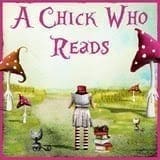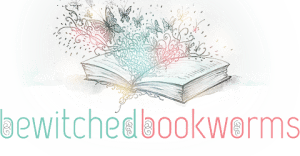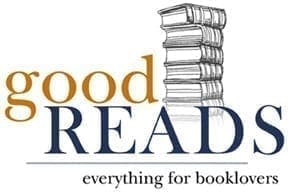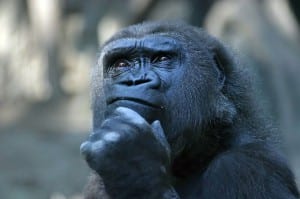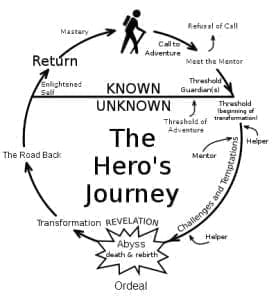
Check out A Chick Who Reads review of Outside In. “Thanks Mr. Cooper, after Googling this lakeside town, I’ve decided that some day I must road trip there just to see Ohio’s Perry Monument.” Such a bonus to open up another part of the world to someone.
Join the fun by subscribing to her reviews on her website or follow her on Facebook or on Twitter.

Check out the review of Outside In on Sara’s Organized Chaos blog. “I’m interested to see what Doug Cooper has up his sleeve for the next book. Definitely has a good writing voice that makes it almost melodic to read…”
Learn more about Sara and her quest for world domination on her website or follow her on Pinterest.
 Check out the review of Outside In on the Literary Lindsey blog. “One of the great strengths of this book is the author’s descriptive voice. From the moment that Brad first sees the island from the ferry, I felt as if I was seeing it in front of me.”
Check out the review of Outside In on the Literary Lindsey blog. “One of the great strengths of this book is the author’s descriptive voice. From the moment that Brad first sees the island from the ferry, I felt as if I was seeing it in front of me.”
Lindsey is a Jersey Shore girl hoping to make her big break in the publishing business. In the meantime, she is reading a lot of books and sharing her views on her blog. You can also follow her on Twitter to stay updated on her reviews.

Check out Bewitched Bookworms review of Outside In. “I give Outside In a four out of five. The writing flows so smoothly with beautifully descriptive passages without being overly wordy. I could just imagine what Put-In-Bay looks like.”
Bewitched Bookworms has three different bloggers reviewing books in a variety of fiction. Definitely something for everyone there. Follow them on Facebook or Twitter to get all their latest reviews.

Check out the review of Outside In on Bibliotica. “With nuance and a great sense of both language and place, Doug Cooper kept my attention from wandering for the entire length of Outside In…”
A nice addition that Bibliotica includes is a recommendation of accompaniments to best enjoy the book. “Goes well with A really good burger with crinkle-cut fries, and a cold beer, preferably from a joint that caters to summer tourists.”
Follow Bibliotica on Twitter to learn about other books.

Goodreads is running a giveaway April 15-30 for a chance to win one of twenty-five free signed copies. If you’ve been waiting to read Outside In during your spring/summer getaway, this is the perfect chance to win a book at everyone’s favorite price — FREE!
No cost to participate, but you must have a Goodreads account to enter.
If you are not finding your next great read or connecting with friends about what they are reading via Goodreads, sign-up today.
Winners to be notified week of May 5 and books to be mailed to winners by end of May. Giveaway open only to US Goodreads members. Stay tuned for future contests in other countries.

This is another installment in my “A Deeper Look” series peeling back the layers of Outside In to better understand the meaning of various aspects and characteristics of the novel.
Reviews are such a big part of the book selling process. Whether the reviews are professional or amateur, from book critics, bloggers, or online posters, they all help create awareness for new books and guide prospective readers on what to buy. Authors and publishers accept this and prepare themselves that not everyone will like the book and criticism is a an integral part of the feedback loop. Ultimately criticism provides another lens through which to view the work and ultimately grow professionally.
Occasionally, however, facts and details about the story get misinterpreted or misunderstood and need to be clarified. As discussed in some of the other Deeper Look posts, following are the main reasons for my writing Outside In:
> Represent the Prevalence of Erik Erikson’s “Quarter-life Crises” Inducing Feelings of Isolation and Loneliness in Twenties to Early Thirties
> Draw Attention to the Immaturity and Delayed Rites of Passage Due to the Abundance of Choices and Extended Periods in Higher Education and Living at Home with Parents
> Raise Awareness of Societal Issues with Self-Medication and Addiction Through The Pursuit of Excess and Instant Gratification
Following are five things mentioned by reviewers to reconsider:
1) “The story is the author’s life story.” While I have used a few details from my own life, such as I was a teacher in St. Louis and I spent a few summers at Put-in-Bay, I am not the lead character Brad Shepherd. The details from my own life that I used were done so because they best fit the character or plot development and also, as mentioned in the Literary References blog post, I am paying tribute to The Portrait of the Artist as a Young Man by James Joyce as he did the same in his creation of Stephen Dedalus, his fictional alter ego. In addition, I’m having fun with the tendency of first novels to be autobiographical, leaving it up to the reader decide what actually happened and what is fabricated for the story.
2) “I didn’t relate to the drug use.” Well, I should hope not. In addition to the third bullet above, the excessive alcohol and drug use are exaggerated to symbolize the modern trials people face in their journeys of becoming. They start as recreational experimentation and the exploration of new experiences and quickly escalate in amount and frequency. This is done to show how easily people can fall into addiction, not even realizing it and completely losing themselves in the process.
3) “The characters frustrated me.” This is another intended response. Much like many of the flawed characters in the current popular television dramas, the characters in Outside In are intended to reflect the proliferation of self-centered and excessive behavior in modern culture. The characters function as a mirror to show the less desirable traits we all possess, and all are in one way or another lost. To find their way, they put themselves in environments to create the image of who they think they should be instead of allowing their trues selves to emerge.
4) “The book was not a mystery.” While there is some uncertainty about what the lead character will do, Outside In was never intended to be a mystery. It is literary fiction, which could be further specialized in the emerging category of new adult focusing on characters in their twenties to thirties confronting issues with identity, career and relationships. It is also categorized as a bildungsroman (novel of becoming), more commonly referred to as a coming of age story, but focuses on the moral and psychological growth of the protagonist ten years later in life than the traditional works in the bildungsroman genre.
5) “Plot was lacking in direction.” This is also a conscious choice and related to Outside In’s categorization as literary fiction, which is more character-driven than plot-driven like mainstream or other fiction genres. The events and actions intentionally wander and unfold in a way to represent the lost and searching aspect of the characters. The characters talk more about passion and living life to the fullest rather than doing anything except escaping to whatever to whatever vice is available. It is this contradiction and the layered characters and complex emotions and what they mean in a broader societal context that are at the core of the story more than solving something by adding up a series of events.
This post is by no means intended to refute others’ opinions. All views are welcome and appreciated. These are just additional points to consider and an attempt to continue the dialogue and discussion regarding Outside In. Feel free to comment your views on the points above or pose new questions via Facebook, Twitter, or Goodreads.

Goodreads will be running a giveaway April 15-30 for a chance to win one of twenty-five free signed copies. If you’ve been waiting to read Outside In during your spring/summer getaway, this is the perfect chance to win a book at everyone’s favorite price — FREE!
No cost to participate, but you must have a Goodreads account to enter. If you are not finding your next great read or connecting with friends about what they are reading via Goodreads, sign-up today.
A link to enter the contest will be shared once the contest opens on April 15. Winners to be notified week of May 5 and books to be mailed to winners by end of May. Giveaway open only to US Goodreads members. Stay tuned for future contests in other countries.
 This is another installment in my “A Deeper Look” series peeling back the layers of Outside In to better understand the meaning of various aspects and characteristics of the novel. Warning! This article contains spoilers of events in the novel.
This is another installment in my “A Deeper Look” series peeling back the layers of Outside In to better understand the meaning of various aspects and characteristics of the novel. Warning! This article contains spoilers of events in the novel.
Although on the surface, Outside In may appear to be simply a hedonistic pursuit of the endless summer, as the title suggests, one must look past the appearance to get to the true meaning at the core. Just as the characters wear masks and put themselves in situations to be the people they think they should be rather than letting go and allowing the person they really are to emerge from the inside, many of the events and actions have a deeper meaning through their connection to other literary works.
Following are some of the literary references in Outside In:
1) A Scarlet Letter by Nathaniel Hawthorne: Both Scarlet and Outside In deal with sin, legalism, and guilt as major themes and the main characters are motivated to create a new life devoid of the shame of past experiences. One direct reference is in Chapter 11 when Brad, Cinch, Stein, Griffin and Birch are at Heineman’s Winery in the back courtyard playing the Name Game. After a trip to the restroom to balance their escalating alcohol buzz, the suggestion is made to join the others in the front bar. Griffin says, “You go ahead. I’m way too amped to be around those folks. I might as well tattoo a big red C on the end of my nose.” This is referencing the scarlet “A” Hester Prynne is forced to wear on her dress after being found guilty of adultery in Hawthorne’s 1850 work of romantic fiction. Just as Hester was cast out to live with the shame and guilt of her sin, Griffin fears he would be discovered and face consequences for his indulgence.
2) The Tell-Tale Heart and The Raven by Edgar Allan Poe: From the rhythmic passages to the supernatural atmosphere and frequent descent of the lead character into monomania and paranoia similar to Poe’s narrators, Outside In is loaded with references to The Tell Tale Heart and The Raven. During his drug-induced delusions and hallucinations, Brad suffers from the same “over-acuteness of the senses” that Poe’s narrator does in Tell Tale Heart. The opening and closing of doors to investigate and block out painful feelings is another connection between Outside In and Poe’s works. The smile Cinch hides behind when confronted by the police on the way back from the monument after being up all night and the one Brad casts into the night at the invisible surveilance team once he realizes there is nothing in the apartment to incriminate him allude to the narrator’s smile when the police come to search the place in Tell Tale Heart. One of the most glaring similarities is at the end of Outside In as grief-stricken Brad laments the loss of Cinch, the faint tapping and consistent gentle rapping from Cinch’s room that awakes Brad pays homage to the similar sounds in The Raven: “While I nodded, nearly napping, suddenly there came a tapping, As of someone gently rapping, rapping at my chamber door.”
3) Portrait of an Artist as a Young Man by James Joyce: Similar to Joyce in Portrait, Outside In contains certain autobiographical facts from my life. By using factual details in Outside In, I am paying tribute to Portrait as Joyce did the same in his creation of Stephen Dedalus, his fictional alter ego, and also having fun with the tendency of first novels to be autobiographical, leaving it up to the reader decide what actually happened and what is fabricated for the story. Both stories incorporate the pursuit of sensual pleasures to initiate the awakening of the protagonist after a self-imposed exile and extensively use free indirect speech. Brad’s first visit to the top of Perry’s Monument is a direct reference to the classic Daedalus myth for which Joyce names his protagonist. At the top of the monument, Brad feels imprisoned by his family, the events of his past, and his culture in general. He contemplates how easy it would be to jump from the deck: “At the edge of the observation deck, only a four-foot concrete wall separates me from an attempt at flight. In just one motion I could be over the side. It would be so easy—too easy. I have to step back.” This alludes to how Daedalus, the father of Icarus, was imprisoned in a tower to prevent the knowledge of the labyrinth from spreading, and he created a set of wings for him and Icarus to escape. Also paying homage to Portrait are the boat ramp and cliff diving scenes in Outside In. Just as the leap from the rocks into the water in Portrait represented a rite of passage to freedom and independence so does it in Outside In. As the characters emerge from the water and Brad muses, “The moonlight reflects off the water on their skin, radiating a soft glow.”, this is a reference to how Dedalus remembers how they “gleamed with cold wet lustre” and “their bodies were heavy with cold seawater”.
These are just a few of the references to other classic works in Outside In. Others exist from William Blake to René Descartes and many more. Comment via Facebook, Twitter, or Goodreads to offer your suggestions.
 This is another installment in my “A Deeper Look” series peeling back the layers of Outside In to better understand the meaning of the setting, themes, characters, plot, and style.
This is another installment in my “A Deeper Look” series peeling back the layers of Outside In to better understand the meaning of the setting, themes, characters, plot, and style.
The path of the lead character twenty-eight year old teacher Brad Shepherd in Outside In is Joseph Campbell’s archetypal hero’s journey of departure, initiation and return. Brad did everything he was supposed to: he graduated from university, got a teaching job, coached after school, even attended graduate classes in the evenings. But after the overdose death of a student on the parent’s pain medication in Brad’s classroom, the parents sue and the school district lets Brad go to mitigate the lawsuit.
By losing his job and everything he had been working toward for the past ten years, Brad loses his sense of identity and induces what psychologist Erik Erikson referred to as a Quarter-Life Crisis, triggering doubt of the life decisions made and the steps to take going forward and inducing feelings of betrayal, isolation, and loneliness. This loss of self and the resulting confusion sends Brad away from his home in St. Louis to Put-in-Bay on South Bass Island in Lake Erie to rediscover who he is and hopefully return with what matters in life.
On his journey, Brad encounters many new experiences and people, often centering around alcohol, drugs and sexual experimentation, which are meant to represent updated trials in Campbell’s monomyth. Working as bouncer at a popular island nightclub, Brad initially loves his new carefree lifestyle and friends, like Astrid, a hopeful Norwegian waitress, Cinch, an affable party boy and local drug dealer, Haley, a forlorn, alcoholic bartender, and Caldwell, a mysterious, mandolin player. Not always the best influences, these new friends represent opposing points of a compass pulling Brad in different directions, and he becomes more lost than ever.
It is often unclear in Outside In who the antagonist is that is preventing Brad from achieving his goal of a rediscovered self. Is it these supposed friends leading him down a destructive path for their own gains, is it life itself that he is battling, or is it himself and his own internal demons that thwart his quest? The uncertainty regarding the true enemy in the modern search for self is shown in the story when Brad visits Perry’s Monument and hears the famous quote Oliver Hazard Perry sent after winning the the Battle of Lake Erie in the War of 1812: “We have met the enemy and they are ours.” and he muses how we wishes he could meet his true enemy.
The events and actions of Outside In intentionally wander and unfold in a way to represent the lost and searching aspect of the characters. The characters talk more about passion and living life to the fullest rather than doing anything except escaping to whatever to whatever vice is available. To watch the flawed characters make the same self-destructive choices time after time can be quite frustrating, but it is meant to represent the excess and instant gratification so prevalent in contemporary society and elevate the discussion of addiction and self-medication. Before judging the characters, actions or events, take the time to peel back the layers and examine what they might mean in the context of your own inside and outside worlds.
Stay connected to this website or follow me on Facebook @ByCooper, on Twitter @ByCoop, or on Instagram @dougiecoop for more deeper looks at aspects of Outside In.
